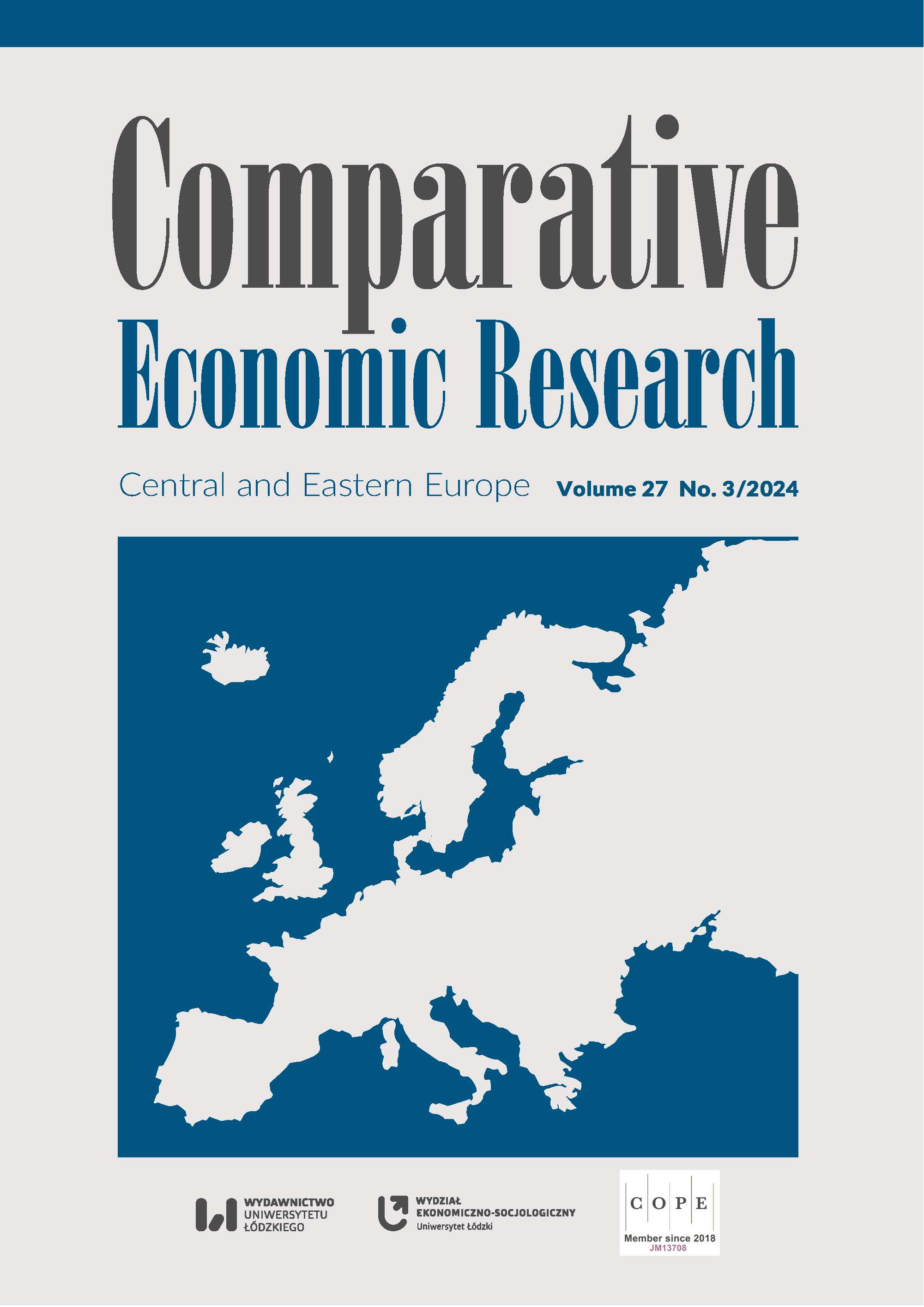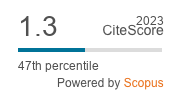The Innovativeness of the Economies of European Union Candidate Countries – an Assessment of Their Innovation Gap in Relation to the EU Average
DOI:
https://doi.org/10.18778/1508-2008.27.19Keywords:
innovation, innovativeness of an economy, innovation gap, European Innovation Scoreboard, Summary Innovation IndexAbstract
Innovation is nowadays seen as an essential success factor in achieving economic prosperity and competing in markets. It is one of the most important determinants of the competitive process throughout the world, helping economies catch up with developing and changing technologies while revealing those countries’ innovation perspectives.
The article assesses the innovativeness of the economies of selected European Union (EU) candidate countries based on the Summary Innovation Index (SII). It also estimates the innovation gap between these countries and the EU average of the SII between 2015 and 2022. The analysis is limited to Türkiye, Serbia, Albania, Montenegro, North Macedonia, Bosnia and Herzegovina, and Ukraine due to the availability of data that describes the SII. It provided for all the countries surveyed in the European Innovation Scoreboards, i.e., the reports of the European Commission, only from 2015. The presented analysis is based on a research hypothesis that suggests that the surveyed countries are characterized by a lower level of innovativeness of economies than the EU average, and therefore, they show an innovation gap compared to the average for EU countries in the analyzed period. The results of the analysis confirm this hypothesis – between 2015 and 2022, the economies of all the examined candidate countries recorded a lower level of innovativeness than the EU average. They showed a lower level of the SII than the EU average, and therefore, all these countries demonstrated an innovation gap compared to the EU average. Recommendations for increasing the innovativeness of those economies are formulated separately in the conclusions.
The article reviews the literature on the innovation and innovativeness of economies and the innovation gap. Descriptive analysis, statistical data analysis, and comparative analysis methods are applied, and statistical data from the European Innovation Scoreboard 2022 are used. The value added of the article lies in its comparison of the level of innovativeness of the economies of selected EU candidate countries to the EU average, as well as its estimation of the innovation gap between these countries and the EU average.
Downloads
References
Aytekin, A., Ecer, F., Koruck, S., Karamasa, C. (2022), Global innovation efficiency assessment of EU member and candidate countries via DEA-EATWIOS multi-criteria methodology, “Technology in Society”, 68, 101896, https://doi.org/10.1016/j.techsoc.2022.101896
Google Scholar
DOI: https://doi.org/10.1016/j.techsoc.2022.101896
Dikbaş, A., Akkoyun, I. (2006), ETP – European technology platforms – a challenge for Turkey’s strategic innovation agenda, “Technological Innovations and Design”, 3 (01–02).
Google Scholar
Dworak, E., Grzelak, M.M. (2020), Innowacyjność polskiej gospodarki na tle krajów UE – wybrane aspekty teoretyczne i praktyczne, Wydawnictwo Uniwersytetu Łódzkiego, Łódź, https://doi.org/10.18778/8220-392-9
Google Scholar
DOI: https://doi.org/10.18778/8220-392-9
European Commission (2022), European innovation scoreboard 2022, Publications Office of the European Union Luxembourg, https://research-and-innovation.ec.europa.eu/knowledge-publications-tools-and-data/publications/all-publications/european-innovation-scoreboard-2022_en (accessed: 27.07.2023).
Google Scholar
Growiec, J. (2012), Zagregowana funkcja produkcji w ekonomii wzrostu gospodarczego i konwergencji, Oficyna Wydawnicza SGH, Warszawa.
Google Scholar
Kaynak, S., Atuntas, S., Dereli, T. (2017), Comparing the innovation performance of EU candidate countries: an entropy-based TOPIS approach, “Economic Research – Ekonomska Istrazivanja”, 3 (1), pp. 31–54, https://doi.org/10.1080/1331677X.2016.1265895
Google Scholar
DOI: https://doi.org/10.1080/1331677X.2016.1265895
Kowalski, A.M.(2021), Dynamics and Factors of Innovation Gap Between the European Union and China, “Journal of the Knowledge Economy”, 12, pp. 1966–1981, https://doi.org/10.1007/s13132-020-00699-1
Google Scholar
DOI: https://doi.org/10.1007/s13132-020-00699-1
Kraciuk, J. (2006), Korporacje transnarodowe a zjawisko luki technologicznej w krajach rozwijających się, “Zeszyty Naukowe SGGW – Ekonomika i Organizacja Gospodarki Żywnościowej”, 61, pp. 13–24, https://doi.org/10.22630/EIOGZ.2006.61.60
Google Scholar
DOI: https://doi.org/10.22630/EIOGZ.2006.61.60
Kubielas, S. (2009), Innowacje i luka technologiczna w gospodarce globalnej opartej na wiedzy. Strukturalne i makroekonomiczne uwarunkowania, Uniwersytet Warszawski, Wydział Nauk Ekonomicznych, Warszawa.
Google Scholar
Lundvall, B.-A. (ed.) (1992), National Systems of Innovation, Printer Publishers, London.
Google Scholar
Maradana, R.P., Pradhan, R.P., Dash, S., Gaurav, K., Jayakumar, M., Chatterjee, D. (2017), Does innovation promote economic growth? Evidence from European countries, “Journal of Innovation and Entrepreneurship”, 6, https://doi.org/10.1186/s13731-016-0061-9
Google Scholar
DOI: https://doi.org/10.1186/s13731-016-0061-9
Mielcarek, P. (2013), Luka innowacyjności polskiej gospodarki względem Unii Europejskiej, “Zeszyty Naukowe Uniwersytetu Szczecińskiego, Finanse, Rynki finansowe, Ubezpieczenia”, 57 (756).
Google Scholar
Okrzesik, O. (2018), Directions of increasing innovativeness of economy – the case of Poland, “Economic and Environmental Studies”, 18 (1(45)), pp. 313–321, https://doi.org/10.25167/ees.2017.44.8
Google Scholar
DOI: https://doi.org/10.25167/ees.2018.45.17
Pawlik, A. (2014), Dystans innowacyjny województw, Wydawnictwa Uniwersytetu Jana Kochanowskiego, Kielce.
Google Scholar
Potencjał innowacyjny gospodarki: uwarunkowania, determinanty, perspektywy (2016), Narodowy Bank Polski, Warszawa.
Google Scholar
Schumpeter, J.A. (1960), Teoria rozwoju gospodarczego, Państwowe Wydawnictwo Naukowe, Warszawa.
Google Scholar
Strahl, D., Sobczak, R. (2017), Conceptual roots for innovation and innovativeness of the economy in Poland, “GeoScape”, 11 (1), pp. 41–51, https://doi.org/10.1515/geosc-2017-0004
Google Scholar
DOI: https://doi.org/10.1515/geosc-2017-0004
Szajt, M. (2020), Innovation distance of Polish regions in relation to European models, “Studies of the Industrial Geography Commission of the Polish Geographical Society”, 34 (2), pp. 7–17, https://doi.org/10.24917/20801653.342.1
Google Scholar
DOI: https://doi.org/10.24917/20801653.342.1
The World Bank (2024), Research and development expenditure (% of GDP), https://data.worldbank.org/indicator/GB.XPD.RSDV.GD.ZS?locations (accessed: 27.07.2023).
Google Scholar
Weresa, M.A. (2012), Systemy innowacyjne we współczesnej gospodarce światowej, Wydawnictwo Naukowe PWN, Warszawa.
Google Scholar
Weresa, M.A. (2014), Polityka innowacyjna, Wydawnictwo Naukowe PWN, Warszawa.
Google Scholar
Zacher, L. (2007), Transformacje społeczeństw od informacji do wiedzy, C.H. Beck, Warszawa.
Google Scholar
Zhylinska, O., Bazhenova, O., Zatonatska, T., Dluhopolskyi, O. (2020), Innovation Process and Economic Growth in the Context of European Integration, “Scientific Papers of the University of Pardubice”, 28 (3), 1209, https://doi.org/10.46585/sp28031209
Google Scholar
DOI: https://doi.org/10.46585/sp28031209
Ziółkowska, W. (2018), Innovativeness of the Polish Economy in the Context of Sustainable Development, “Copernican Journal of Finance and Accounting”, 7 (3), pp. 71–88, https://doi.org/10.12775/CJFA.2018.016
Google Scholar
DOI: https://doi.org/10.12775/CJFA.2018.016
Downloads
Published
How to Cite
Issue
Section
License

This work is licensed under a Creative Commons Attribution-NonCommercial-NoDerivatives 4.0 International License.












